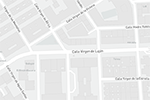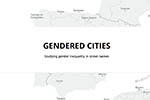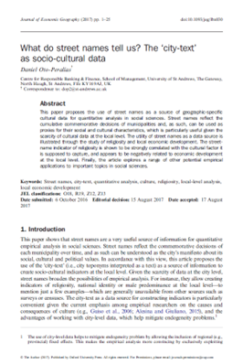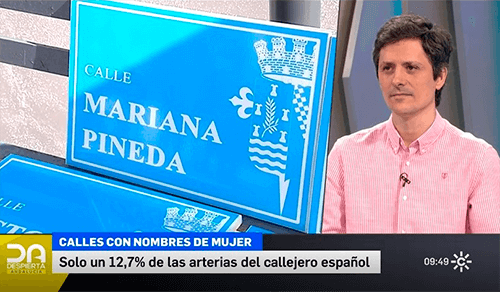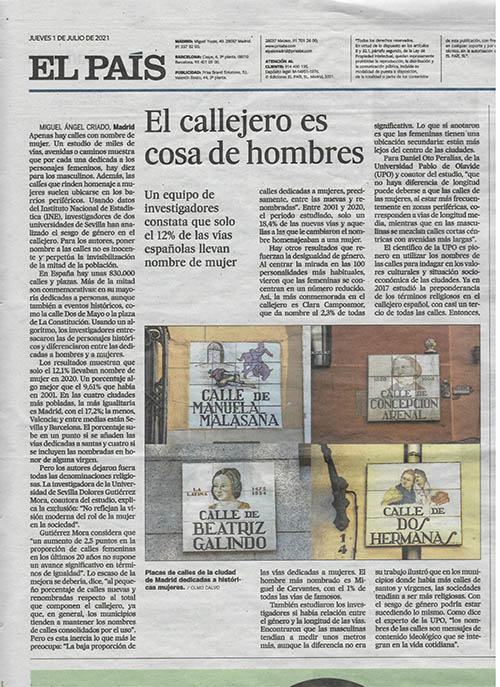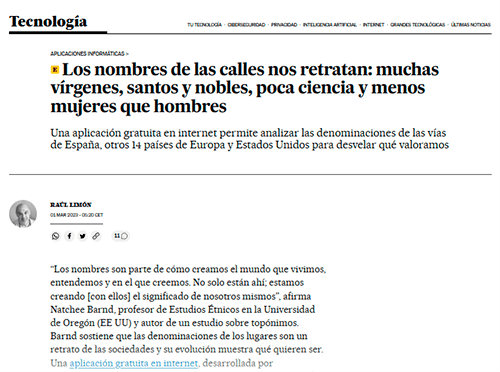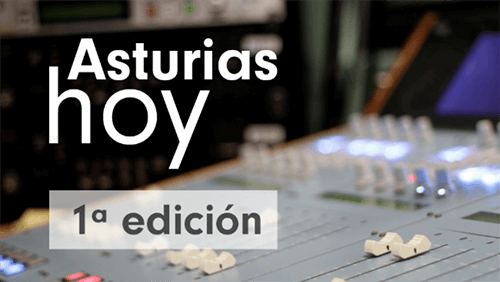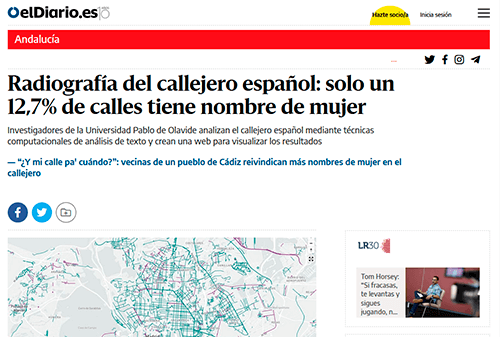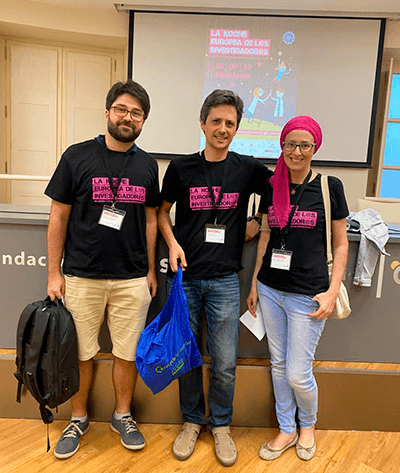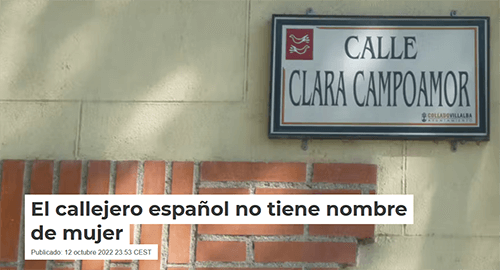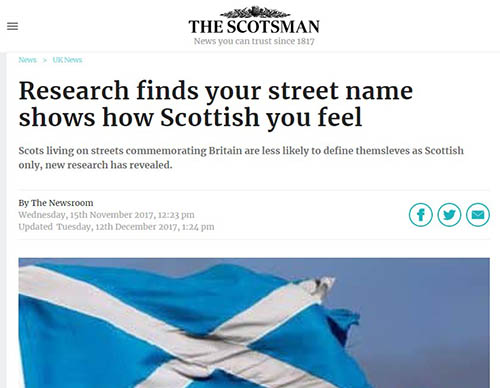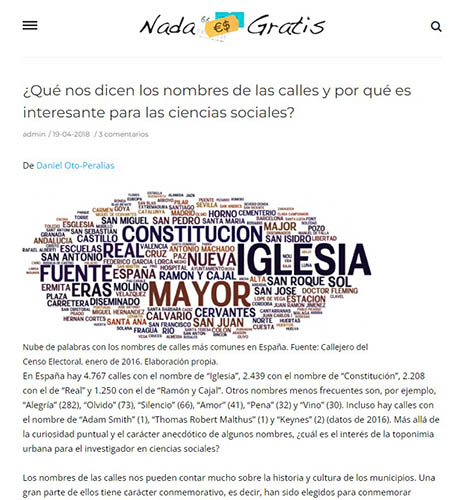
Word cloud with the most common street names in Spain. Source: Electoral Census Street Map. Own elaboration.
About STNAMES LAB
In Spain there are 5,422 streets named “church”, 2,722 named “constitution”, 3,862 “royal”, and 1,383 “Ramón y Cajal”. Other less frequent names are, for example, “happiness” (381), “oblivion” (76), “silence” (84), “love” (194), “sorrow” (132) and “wine” (69). Beyond occasional curiosity and the anecdotal nature of some names, why social scientist should care about street names?
The names of the streets are not random but represent cultural markers of local communities. A large part of them has a commemorative character, that is, they have been chosen to commemorate personalities, events, and values that are considered important by the population. Therefore, they can tell us a lot about the history and the cultural, social, and political values of municipalities.
The importance of street names for social sciences lies on the one hand in the information they contain about the culture and history of municipalities, and on the other hand in its strong -although commonly unnoticed- symbolic power. The frequent controversies occurring around the naming and renaming of streets, as well as the use that political regimes make of street names to inscribe a certain ideology into the urban landscape testify their symbolic power.
STNAMES LAB (Street names Lab) is a research group focused on the quantitative analysis of urban toponyms. We apply data science tools to street names to study social phenomena such as religiosity, political identity, and gender inequality.
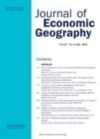
In a first academic article we propose the use of the information contained in street names to measure cultural variables. Focusing on religiosity, we show that people in regions with a higher percentage of religious streets tend to have stronger religious beliefs. (pre-print)

In another recent article, we analyzed more than 15 million street names to measure gender bias in the Spanish street map, finding that only 12% of streets referring to people have a woman’s name. We also find that female streets are relatively scarcer in urban centers and that, concerning new streets, gender bias is lower but still far from parity. (pre-print)

Another piece of research is an analysis of Scottish streets where we find that people who live in areas with street names that commemorate Great Britain, such as ‘Queen’, ‘Royal’, ‘Regent’ or ‘London’, are less likely to identify themselves as Scottish only.
Content
Search apps to visualize the spatial distribution of street names in North America, Europe and Spain and download the underlying dataset.
Summary of the article What do street names tell us, where it was first proposed the use of street names as a source of geographic-specific cultural data for quantitative analysis in social sciences. The article applies this methodology to measuring religiosity at the municipality level.
Friendly summary of the results of the article Gendered Cities, through a dynamic geographic “tour”.
Two useful tools to find and monitor gender bias in street names: an interactive graph that represents the evolution of the proportion of female streets in each municipality, and an interactive map to visualize gender bias in street names (where one can zoom in from the provincial to the street map level).
Publications
Impact
At STNAMES LAB we are concerned about disseminating our research results beyond the academic sector. What follows is a selection of press coverage of our work and dissemination activities:
Back cover of EL PAÍS, 30/06/2021, titled «The street map is a male thing», featuring the results of the article «Gendered cities: Studying urban gender bias through street names». Also in the digital edition at this link.
Story from EL PAÍS, 1/3/2023, titled «The names of the streets portray us: many Virgins, Saints and Nobles, little science and fewer women than men», featuring the applications of the project described in the article «The spatial distribution of the street names: a web app to visualize and download street-name data».
A full list of media coverage is available here.
Funding
Research project: Gendered cities. Quantitative analysis of gender bias in urban toponymic inscriptions. Explanatory factors and consequences (Reference: UPO-1380998). Co-financed by the European Regional Development Fund (ERDF) and the Andalusian Government, within the framework of the Andalusian ERDF 2014-2020 operational program. Specific objective 1.2.3. «Promotion and generation of frontier knowledge and knowledge oriented to the challenges of society, development of emerging technologies »). ERDF co-funding: 80%.
Research project: Towards a more inclusive society: proposals from the economic and geographical analysis (Reference: P20_00808). Co-financed by the European Regional Development Fund (ERDF) and the Andalusian Government, within the framework of the Andalusian ERDF 2014-2020 operational program. Thematic objective “01 – Supporting research, technological development and innovation”. ERDF co-funding: 80%.




